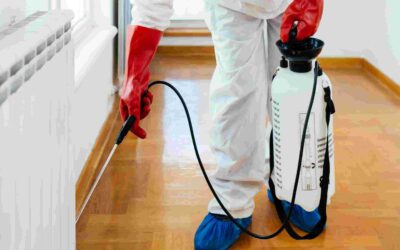
Safety and Success of DIY Pest Control
No one wants to discover pests in their home or business. But when something unwanted creeps into your space, the first thing you’ll want to do is get rid of them–for good. Because some people are naturally cautious about using environmental toxins, poisons, or chemicals to control pests in the areas where they spend lots of time, and other people simply want to save money, many people naturally look to do-it-yourself, or “DIY” solutions for everyday pest problems.
Some DIY pest control options are very effective and safe for people to use while others may not be as helpful as they are commonly believed to be. Some DIY pest control solutions can even be dangerous for people to attempt on their own.
These are some DIY pest control strategies, as well as how effective and safe they can be:
Use Essential Oils
Essential oils can be a surprisingly effective DIY pest control method, and they can be safe if used carefully and by someone who is well informed and intentional about the strength and purpose of each essential oil they choose to use. Peppermint around the perimeter of a building or area can deter mice, while an unbroken barrier of powdered cinnamon is an effective ant deterrent for small areas such as a pet’s feeding area.
Prevent Pests from Entering Your Space
There are many ways to prevent pests from entering your home or business, and these are the safest and easiest ways to DIY pest control. They can also be fairly effective, especially if repeated/enforced frequently and thoroughly. These strategies include checking for pests in boxes or packages before bringing them into your home or office; cleaning up piles of clutter, especially fibrous paper products which pests love to eat or nest in, such as cardboard boxes, magazines, and newspapers; sealing up any holes in your walls, doors, baseboards, etc. with caulk, steel wool, wire mesh, and similar barriers; and removing any sources of food, water, and shelter that attract pests.
Use Store-bought Pesticides
The safety and effectiveness of using store-bought pesticides for DIY pest control depends on the care and attentiveness of the person applying the pesticides. Someone who reads and follows the instructions will be far more likely to successfully control pests, in a way that is safest for their environment, family, and pets. However, someone who uses more than the recommended amount or who uses outdoor products indoors, for example, can cause serious damage to their own and their loved ones’ health by using toxins improperly.
Knock down Hornet or Wasp Nests
While physically destroying a hornet or wasp nest might be an effective method of pest control and removal, it can be very dangerous to attempt this on your own, no matter what time of year you choose. Even in the winter, when stinging insects are slower or dormant, it is not safe to disturb an established wasp or hornet nest. You may think a nest is unoccupied and then have a nasty surprise when the insects hibernating inside spring into action to defend their nest. Wasp and hornet stings can cause painful and harmful allergic reactions, so it’s safest not to risk it and to resist the temptation to simply knock down a nest, piñata-style.
If you try to handle pest problems with DIY pest control methods, and you still have issues, contact West Termite, Pest & Lawn for help. Our trained exterminators will work with you to augment the treatments you’ve already applied, so that pests can be removed from your space safely and effectively.
More posts from West Termite, Pest & Lawn
Spring Into Action: Preventing Termite Infestations in Arkansas Homes
Termite infestations are a serious concern for homeowners in Arkansas, especially during the spring when these pests become most active. Preventing termite infestations early can save you from expensive structural damage and long-term headaches. Termites thrive in the...
Early Spring Lawn Care Tips: How to Keep Your Arkansas Yard Healthy
A healthy lawn starts in early spring. If you want lush, green grass by summer, the groundwork begins as the weather warms and the soil softens. The right early spring lawn care routine is essential for homes in Arkansas, where fluctuating temperatures and humidity...
Mosquito Season is Coming: How to Protect Your Arkansas Home This Spring
Spring is here, and with it comes mosquito season. As temperatures rise and moisture increases, mosquitoes begin to thrive across Arkansas. If you are not prepared, these presets can quickly invade your yard and turn outdoor activities into a battle against bites. The...



